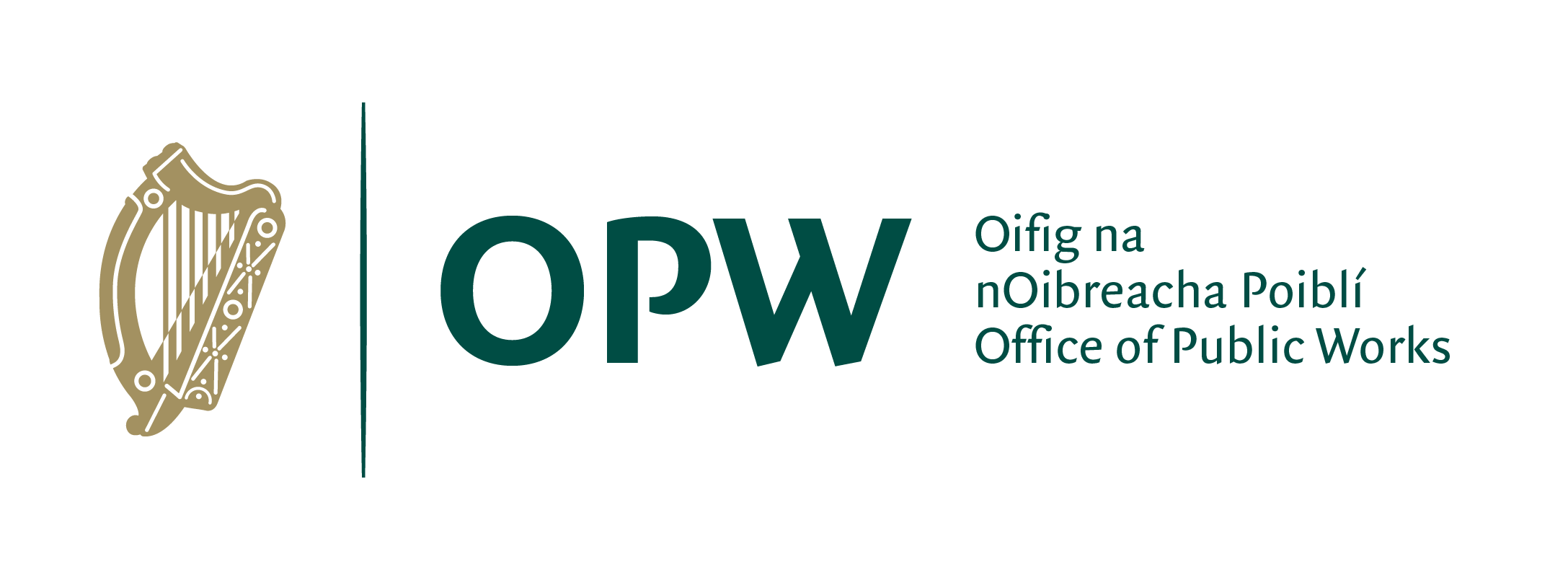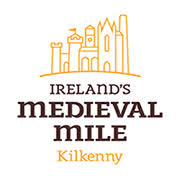The Butler dynasty by the early part of the 14th Century were to emerge as the pre-eminent family in Ireland, even surpassing the FitzGerald and Burke families later in the century.
Part of this success can be attributed to their loyalty to the English crown. This came to the fore during the Bruce invasion in Ireland in the early 14th Century. This ready loyalty was rewarded when James de Boitiller was elevated to the title Earl of Ormond in Oct. 1328 and to was to marry Eleanor de Bohun, the granddaughter of Edward I of England and then one of the powerful baronial families in England.
Despite their assured loyalty to the English crown (this continued with the 2nd Earl of Ormond fighting with Edward III at the Battle of Crecy), the family retained their close links with Ireland and the Irish bardic traditions. The Statues of Kilkenny in 1366 were a failed attempt at stopping the intermarriage of the Anglo-Normans and the Irish and the adoption of the Anglo-Normans of Irish dress, games, horse-riding and the patronage of Irish poets. The translator for the King’s representative in Kilkenny, Lionel Duke of Clarence, was the 2nd Earl, who could along with the other members of his family speak Irish fluently. This continued with the 3rd Earl, James Butler, who purchased Kilkenny Castle in 1392 and despite having married an English heiress, Anne Welles, kept and an Irish mistress Catherine of Desmond daughter of Gerald ‘the Poet’ FitzGerald. Indeed, he came in for harsh criticism for this by none other than Geoffrey Chaucer who was the court during the same time as the Earl and knew of this scandal in his eyes. James Butler, like his father and grandfather was an Irish speaker and had no difficulty in using Gaelic law and culture were in was to his advantage. He acted as an interpreter for Richard II when he visited Ireland in the late 1390’s and Richard in turn was to act as godfather to one his many children, an event commemorated on the Marble fireplace in the Long Gallery of Kilkenny castle to this day.
Ultimately the Butlers became victims of their very success. The 4th Earl, known as ‘The White Earl’ on account of his fair hair, was raised in England under the tutelage of Thomas of Lancaster during the reign of Henry IV. Despite his English upbringing he continued the tradition of providing patronage to the traditional Gaelic poets and writers, indeed he commissioned many books both in English and in Irish. He was also cited as a possible source for Shakespeare’s play Henry IV part II. James Butler was to marry twice first to Joanne, daughter of the Earl of Kildare and secondly to Elizabeth, daughter of William Beauchamp, Lord Abergavenny. He became active in English politics and his three sons, all later destined to become Earls of Ormond in their own right, were securely raising completely in England. This was to come at the expense of their Irish estates and the Butler became absentee landlords, allowing cadet branches of the family to act in their capacity as agents for their Irish properties and holdings.
With their links to the Lancaster family it was inevitable that the Butlers became embroiled in what became known as ’The War of the Roses’, the decades long feud between the houses of Lancaster and York. The Butlers naturally were staunch supporters of the Lancastrian cause and interesting the Fitzgerald’s became agents of the Yorkist side in Ireland. The Butler family were to fare badly in this conflict, the 5th Earl was executed after the Battle of Towton on 1461, one of the bloodiest of all English battles it was fought during a snowstorm and was brutal on both sides. Both of his brothers did not leave any clear legitimate male heir to the Ormond title, with the exception of one Sir James Butler son of the 5th Earl with his Mistress Reynalda O’Brien, who acted as an agent for the family in Ireland and who was to attempt to secure the titles.
With the absence of the main branch of the Ormond family active at the English court and involved in English politics, the running of their vast Irish estates was deputised to cadet or junior branches of the family. The most ambitious of these by far were Piers Rua Butler and his wife the formidable Lady Margaret FitzGerald.
Piers was a direct descendent of the ’MacRichard’ branch of the family, the ‘MacRichard’ is a reference to having Richard II act as godfather to the family as mentioned earlier. Despite having a royal godfather this line of the Butler family became the most Gaelic, marrying into the Kavanagh and O’Carroll families. Piers was fostered at a young age to Gerald FitzGerald, the 8th Earl of Kildare and in 1485 he married Margaret a daughter of the great Earl. After the death of his father James Butler who was acting as deputy to the absent 7th Earl of Ormond, Piers assumed the office and regarded it as a hereditary prerogative to his family. In 1497 he murdered his rival to the claim Sir James Butler, the illegitimate son of the 5th Earl, excusing it a self-defence and an execution of a ‘traitor’. Over the next ten years he Piers and Margaret began to secure their claim to the Ormond lordship after the dead of the present Earl Thomas who had a daughter as heiress, Lady Margaret Butler, who was to marry into the Boleyn family.
Piers and Margaret were to have three sons and six daughters over the time of their marriage. They acted in concert to promote the best interests of their family and their dependents. Piers cultivated good relations in England with Cardinal Wolsey, send a princely gift of hawks to the Cardinal (as one prince to another prince (of the church)) and acting as Deputy to Lord Surrey and the position of Lord Treasurer (until he was replaced by his Brother in Law the Earl of Kildare. Piers also sent their eldest son and heir James to be educated at the English court.
However, of the two it was Margaret who was the better qualified in terms of education, familial links and she was just as ambitious as her husband. To this end she promoted her husband’s claim to the Butler titles via her brother, Gerald FitzGerald the 9th Earl of Kildare, but he was when was reluctant to do so she had qualms about turning against her own family to promote her best interests. She was also instrumental in having both of Piers older brothers declared illegitimate in order that he may claim the Butler titles. Margaret considered that her position was best served by supporting the interest of the Butlers rather than her own family.
It is interesting to note that she referred to herself and was more popularly known as ‘Mairead Gearoid’ (in reference that she was the daughter of the Great Earl of Kildare, Gearoid Mor) and various wild stories became attached to her, which she no doubt cultivated herself to ensure her fearsome reputation. The Castles of Ballyragget and Balleen in the lordship of Ormond has stone benches in watchtowers that were called locally as ‘Mairead’s Chairs’ because Margaret is supposed to have hung prisoners from them. She was also said to have hung people from a tree, a large whitethorn, called ‘Sceach na Cuntaoise’ the Countess’ Bush. Her impact on local folklore was deep and testament to her rule with her husband. Stanihurst, an English historian of the time refers to her that ‘the estates of the realm crouched onto her’ and she was ‘man-like, tall of stature, very rich and very bountiful’ Clearly there was some ambiguity about her character on the one hand she was shrewd and calculating and on the other very devout in her religion and charitable to the poor. The Irish tradition says she was ‘the very best woman of her time for hospitality and munificence’. Despite her praise in the Irish folklore she was also greatly feared. In another in Irish folktale she is called ‘an Chuntaois Mhallaithe’ the Cursed Countess, which probably refers to her damaging speech, curses, rather that her character. She is said to have abducted a favourite child of the Walsh family and what befell the child is not recorded but the tone is suitably sinister All that was recorded in Irish was ‘in vain did the inconsolable father…’ this was apparently in reference to an ongoing feud between the Countess and the Walsh family. The local folklore recorded in the 19th Century still makes mention of the Great Countess and various feuds and curse put on the locals attributed to Margaret. So she still cast a very long shadow.
Despite her reputation she is recorded again by Stanihurst as ’plante great civility in ye countyes of Tipperary and Kilkenny & to give good example to ye people of that country brough out of Flanders and other countreys diverse Articicers who were daily kept at work by them in theyr Castle of Kilkenny were they wrought and made diaper, Tapistry, Turkey-carpets, cushions and other such works’ Piers and herself were instrumental in establishing the first grammar school in Kilkenny.
The final word shall be left with her brother Gerald Og, the 9th Earl of Kildare who recorded ‘said Erle (Piers) or my Lady, his wif, by whome he is only ruled.’
Peter Kenny
October 2020



